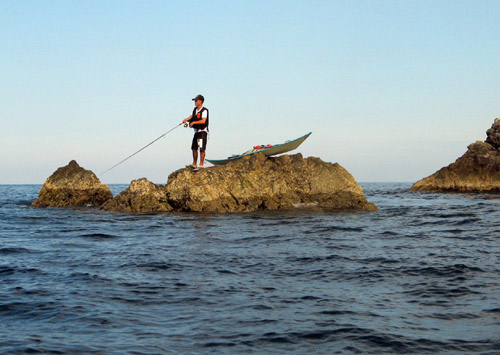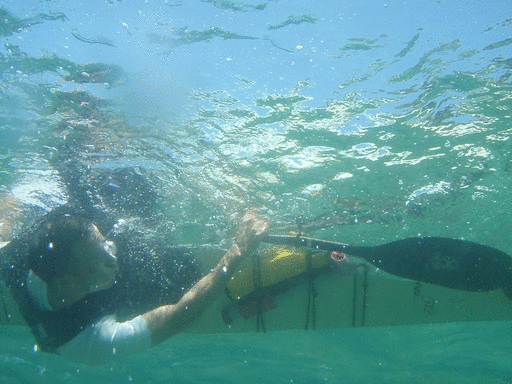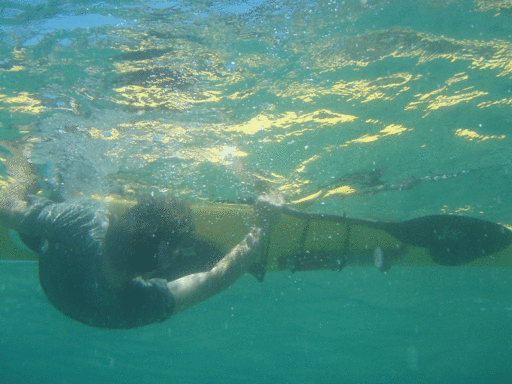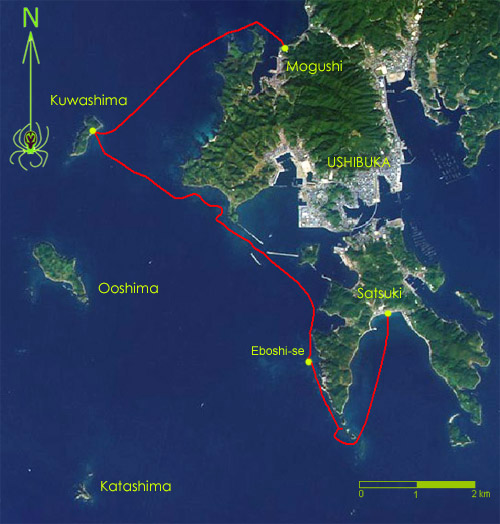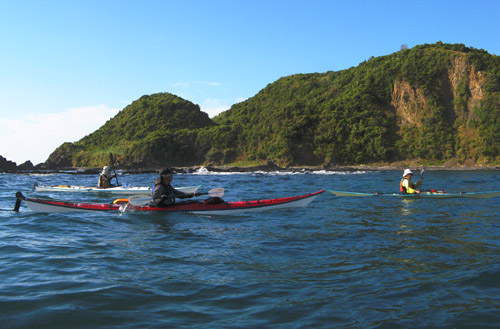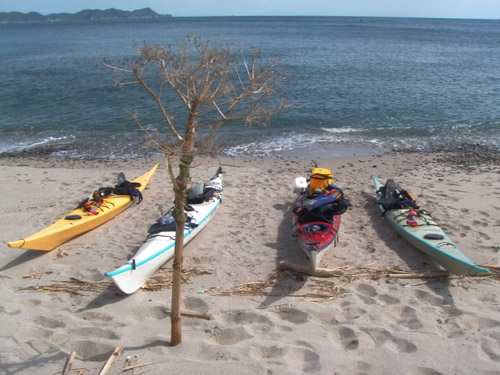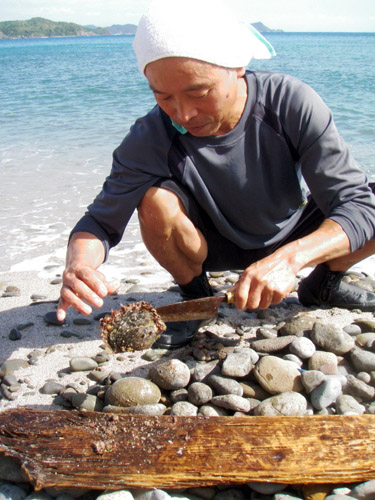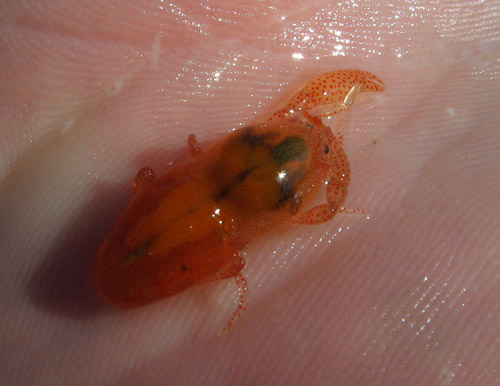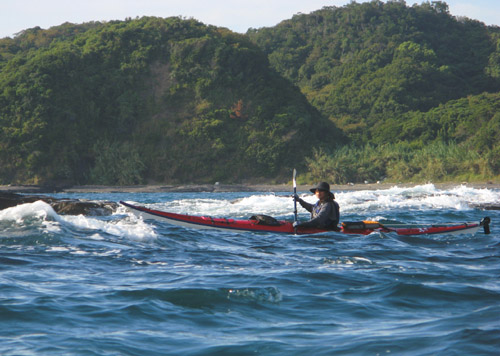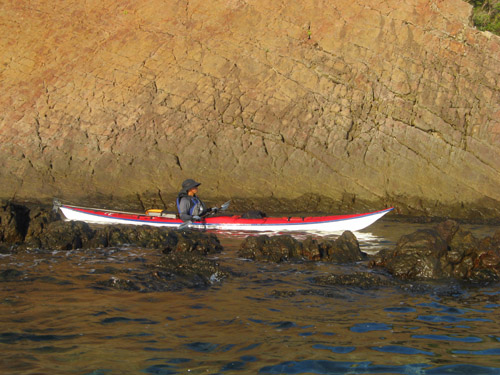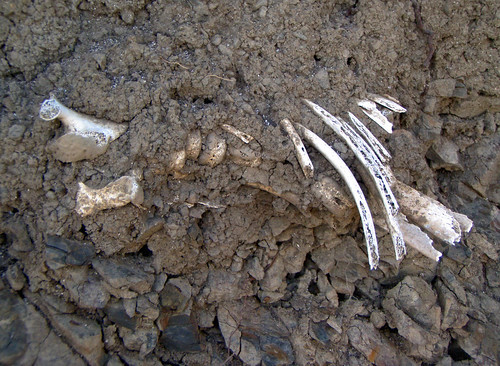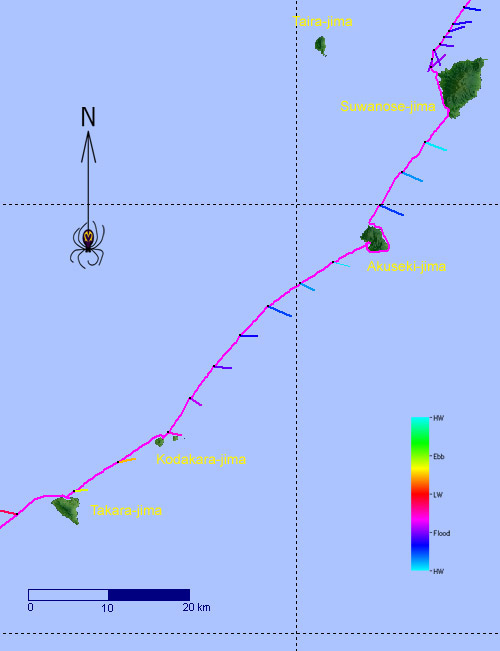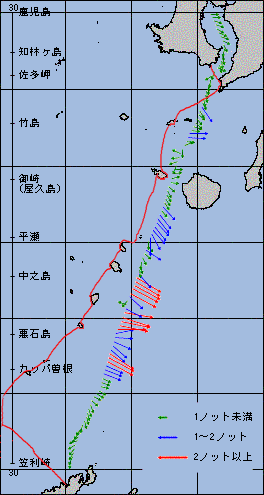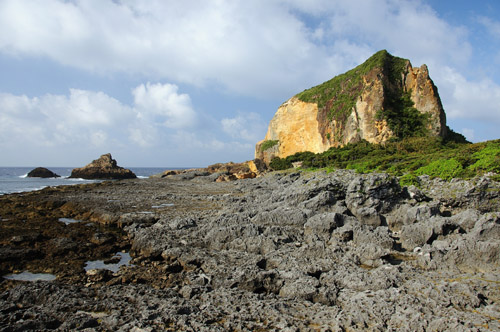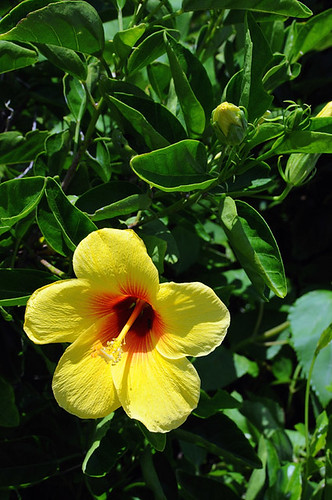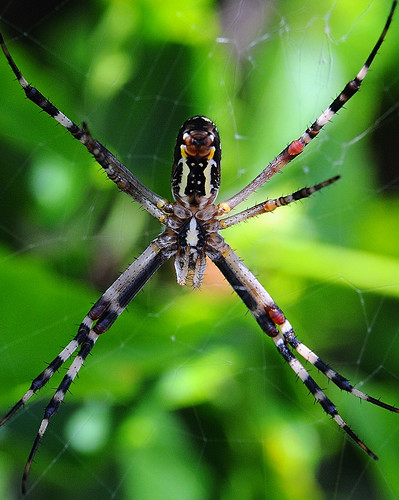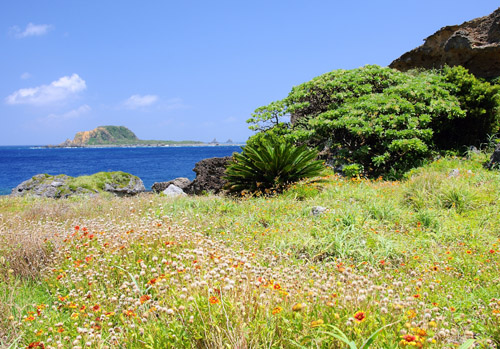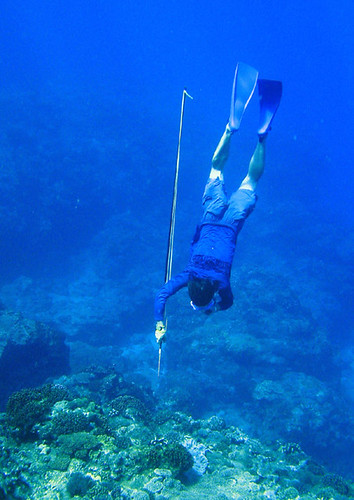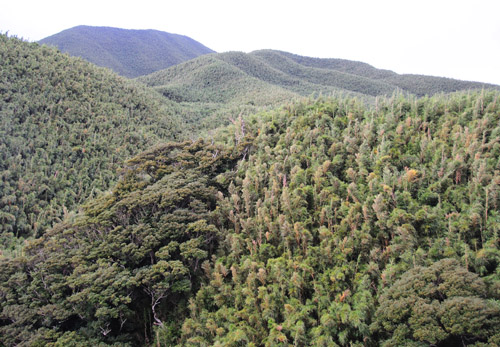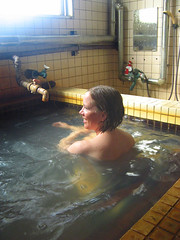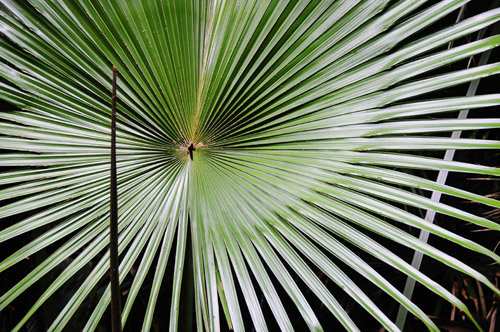Central Mountain Biking 九州中央山地MTBツアー
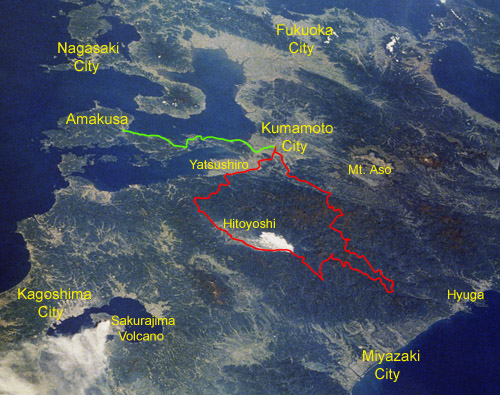
On a rare long weekend this September, we took a rambling bicycle trip through the mountains of Central Kyushu. We plotted the trip (red) and the drive up (green) over an image taken by a space shuttle astronaut (from NASA's excellent Earth from Space site). The course was very hilly with about 80km of distance 1000-2000m of elevation gain for the first three days. A relatively flat but long 140km finish on the fourth day was possible by following the Kuma River basin and canyon through the hills. The image shows fog in the upper basin; an almost daily phenomenon in an unusual flat valley surrounded completely by mountains.
9月のシルバーウイーク九州の中央で自転車の旅に行ってきました。NASAの宇宙から撮ったイメージの上に自転車の旅は赤い線で車で行った分は緑です。今度の自転車の旅登りがきつかった、最初の三日間80キロの距離で登りが1000-2000メートルでした。最後の日は球磨川盆地を下って非科学的に楽な140キロでした。このイメージでは殆ど毎日の現象で盆地では霧が深いです。

The course began from our friend's house on the southern outskirts of Kumamoto City, where we dropped off our car. The sun had just risen, illuminating the pastoral landscape as we followed the flood-control dikes of the Midori River upstream into the hills towards its headwaters.
スタートは熊本市の南の郊外の友達の家。そこで車駐車を止めて貰って、緑川を源流の方へ向かって出発しました。
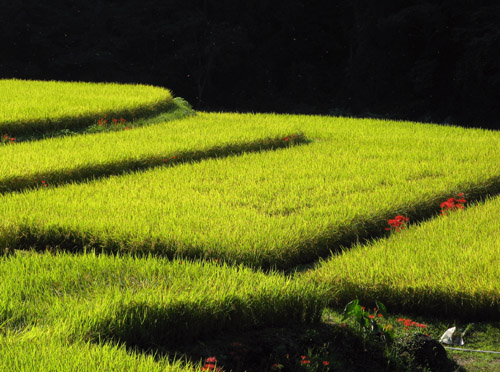
Rice will be ripening soon in the western foothills. Bevies of dragonflies hover over the paddies as the day heats up, but the ubiquitous vermillion of amaryllis (literally 'equinox flower' in Japanese) shows that the summer is winding down.
夏の終わり:トンボが田んぼの上に飛んでいる、お米はもうすぐ収穫で彼岸花が赤く咲いている。
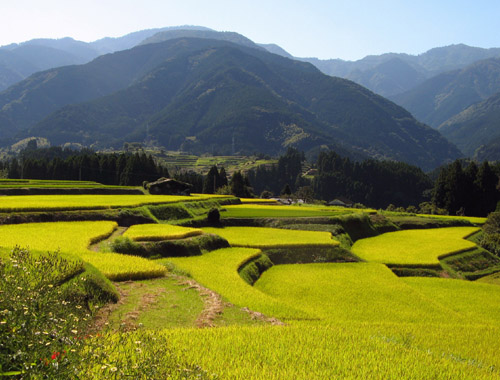
As the terrain becomes more rugged, we begin climbing among terraced fields whose elusive color seems that much brigther when set off by the dark green of the deep mountains.
山の緑とだんだん畑が美しい。
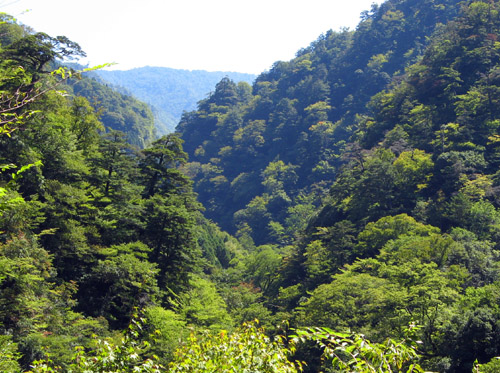
We enter the narrow Naidaijin Valley and the forest and steep mountainsides close on us.
内大臣の狭い谷に入る。
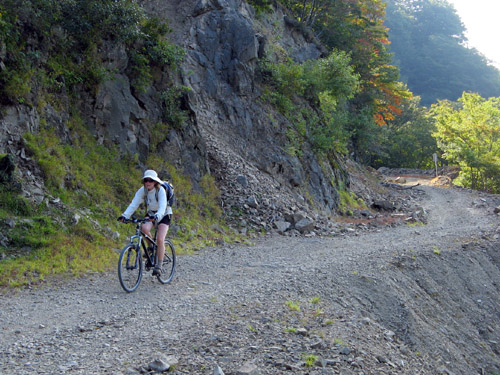
The dirt track leads over a high pass over Kyushu's spine into Miyazaki Prefecture, through some of the most remote tracts of western Japan.
砂利道で山越えて宮崎県に入る。

Patches of virgin forest were spared on the highest reaches of these mountains; they are a fountain of relaxation to pass through.
山の上の方原生林がまだ残っている。
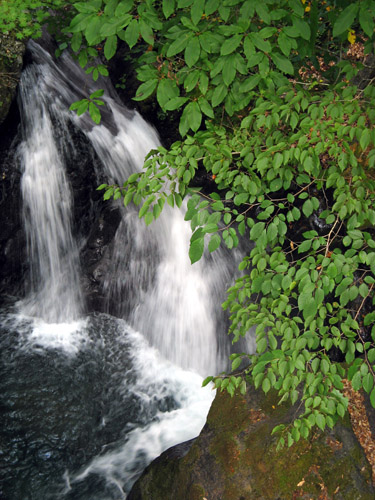
The source waters of the Mimi River, clear and vigorous in spite of a rather dry summer.
耳川の源流。
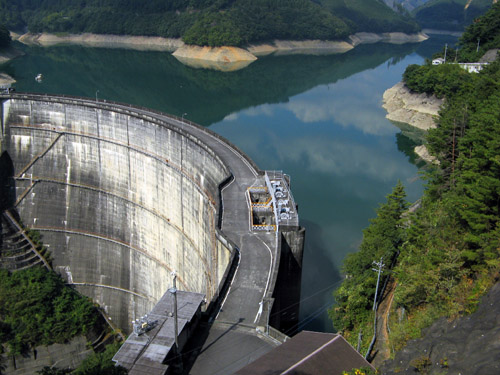
Thirty kilometers downstream, the Shiiba dam spans the grown river, a part of an extensive system of tunnels and dams that harness streams for hydroelectric power.
椎葉ダム。
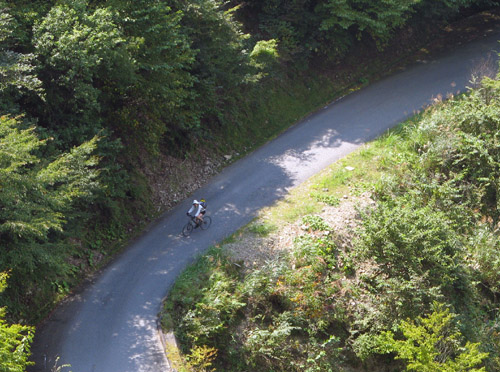
The Cental Mountains are characterized by steep, erosive slopes upon which narrow roads twist precariously. One tack of the road below me, Leanne steadfastly climbs toward the day's summit.
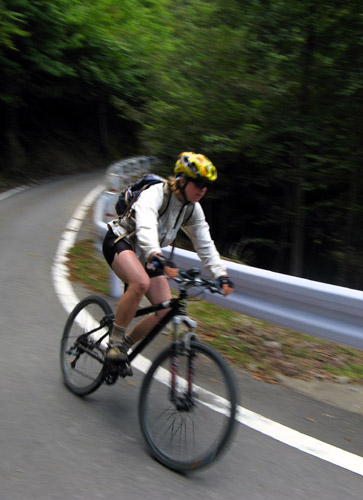
A multi-hour sweaty uphill crawl is rewarded by an hour's exhilirating descent into the valley.
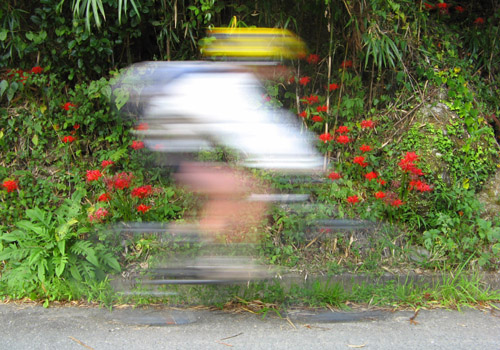
Like a ghost in a static landscape, Leanne makes a fleeting pass in front of an amaryllis-spangled bank.
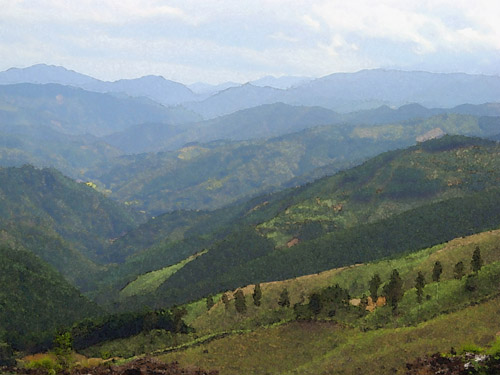
Spending a damp morning ascending the Dogawa valley, we can retrace our meandering path on the landscape viewed from on high. I took some artistic license with this image, just for a little fun.
渡川の谷に下ります。

Quite unexpectedly, we find a large and impressive waterfall on the Oyabu River. We have explored these hills through and through it seems, but they still haven't revealed all their secrets to us. The fall is marked by only the smallest of symbols on the topo map and so was easy to miss.
大藪川で大きくて美しい滝を発見しました。
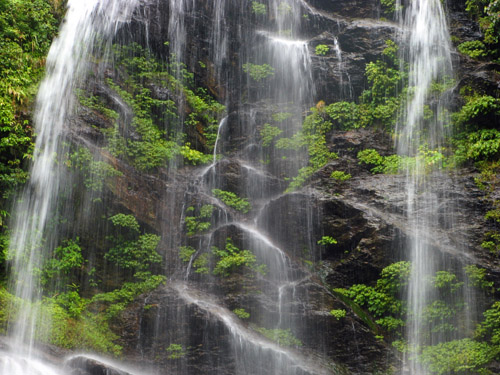
Behind the veil of water, an exquisite inspiration for a Japanese-style garden.
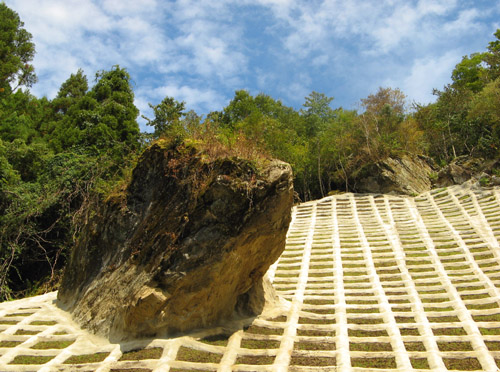
Roadside Iwagumi Series continued...inspired by nature and Zen? A mere accident of the gnashing Japanese construction machine? Or both?
岩組みシリーズの次き。

On the morning of the final day, the mountains opened for a time to reveal the lush, fertile Hitoyoshi Basin with its sea of ripening rice.

Camera technology really could not do justice to the delicate colors that were all around us.

The mountains encircling the basin bring daily fog and chill air in the winter, but are also a source of clear water and nutrients that make this valley one of the most fertile farming areas in the country.
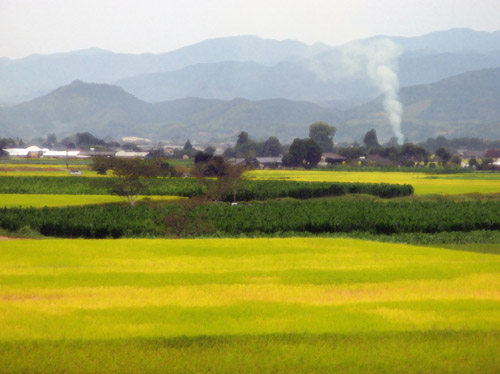
A pastoral scene in the Hitoyoshi Basin - sorry I went a bit nuts at the controls again!

